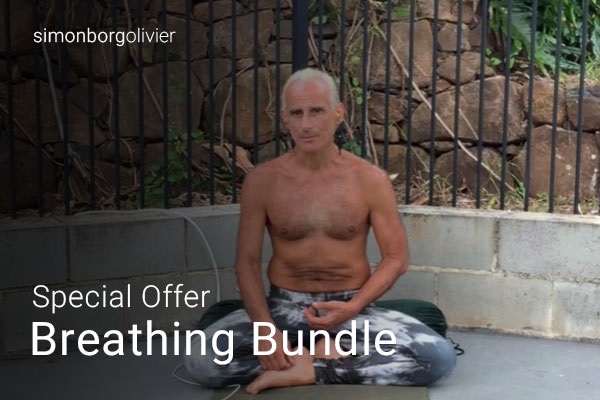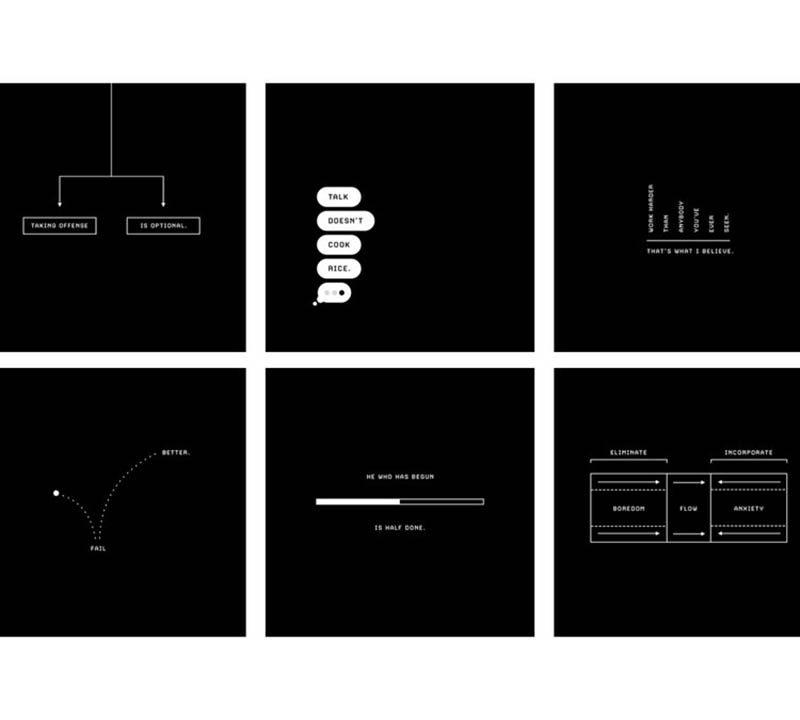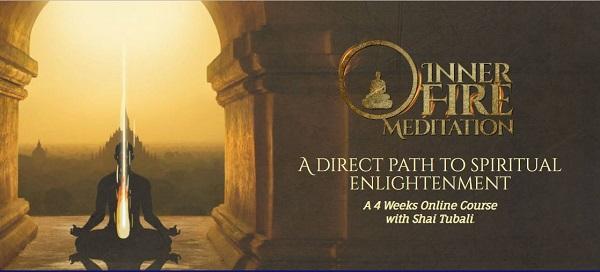[GroupBuy] Simon Borg-Olivier – Special Breathing Bundle
$59.00
Discount 20% if your total cart over $150
- Satisfaction Guaranteed
- Fast and forever download link
- Secure Payments
- Reupload FREE
Description
Special Breathing Bundle
Get 2 Courses
Introduction to Breath-control Practice
In this online course, I give you an introduction to ‘breath-control’, which has been practised by traditional cultures all over the world for many thousands of years. In the yoga of Tibet and India, it is referred to as prânâyâma. In China, it is related to the practices of chi gong. This is a very accessible set of practices that can be done by anyone and have very effective results for health, longevity and well-being.
This practices taught in this course are designed to give you energetic and physiological benefits by building up carbon dioxide and breathing into your whole body in a way that is initiated and sustained from your diaphragm. These practices can help to you to:
- Allow more oxygen to enter your body via your lungs by expanding your lung vessels (bronchodilation)
- Increase oxygen uptake into your cells, which can increase your energy levels by 18 times
- Calms your nervous system and reduces stress and anxiety
- Reduce your appetite for heavy, processed and acidic food by regulating your blood pH
- Bring more blood to your brain and heart by expanding your blood vessels (vasolidation)
- Helps to increase digestion of food, absorption of nutrients and elimination of wastes and toxins
- Helps to relieve back pain
WHO IS THIS COURSE FOR
This course is for anyone who wishes to improve their energy levels while increasing their level of calmness. This course may benefit people suffering from a number of conditions including: low energy levels, breathing difficulties, anxiety, indigestion, disturbances in the menstrual cycle.
The exercises taught in this course can benefit most beginner to advanced practitioners of any form activity that involves posture, movement and/or breathing who want to practice in a safer and more effective manner.
The practices shown here are ideal for teachers and students of dance, martial arts, gymnastics, fitness training and modern yoga.
Apart from teaching natural breathing, these exercises are the safest, most accessible yet most effective breathing exercises for most people can practice.
WHAT YOU GET
- A 45 minute lecture that simply and clearly explains the physiology of breathing and the exercises i show you can benefit you
- 15 short video practice classes of between 15 to 27 minutes each that you can practice with.
- Explanatory text and further resources you can draw from to enhance these practices.
WHAT I AM TEACHING YOU ON THIS COURSE
In this course, I give you 4 simple breathing exercises that can truly energise you. This is one of the special ways that you can get more energy by doing less than you normally do – by breathing less than you normally do! But in a focused and relaxing way.
Natural breathing is usually the best breathing for most people to practice during most exercise. In that way, you can concentrate on doing your exercise without having to worry about breathing. If, however, you are doing something very simple and relaxing such as lying down or sitting, then you can take the time to do specific breathing exercises, and that is what I will teach you in this course.
Essentially, there are two types of breathing exercises. One type of breathing exercise, which is commonly taught in many physical training activities including many modern yoga classes. This often includes locking your core, inhibiting your diaphragm, and stressful over-breathing (hyperventilation) into your chest. While this can give you some benefits in your physical body in terms of strength and flexibility, it tends to reduce the flow of oxygen to your brain and your cells and overstimulates your sympathetic nervous system (the flight, fight and fear response’). This not only reduces your energy levels, and reduces the function of your internal organs, but it can also bring your subconscious to a state of anxiety and fear.
The other type of breathing exercise, the one I wish to share with you here, is breathing for increasing energy. This type of breathing is designed to increase the amount of oxygen entering your cells. In the breathing exercises, I teach you on this course, the trick is to breathe as little as you comfortably can to build up carbon dioxide. Carbon dioxide has an important role in your body of being able to signal the red blood cells to give the oxygen they carry to your body cells. If there is not enough carbon dioxide in your body then red blood cells tend to retain their oxygen and not release it into your cells. This is referred to as the Bohr-effect. When you get oxygen into your cells you have the possibility of making 18 times as much energy for every glucose molecule of ‘fuel’ you ‘burn’.
The four simplest breathing exercises (apart from relaxed natural breathing) are as follows:
- Inhalation emphasis breathing: make a long slow inhale and then a short natural breath out.
- Inhalation retention emphasis breathing: Make a gentle full breath in, and then hold your breath in as long as you comfortably can, and then a short natural breath out.
- Exhalation emphasis breathing: Make a gentle full breath in, and then breathe out as slowly as possible for as long as it is comfortably possible.
- Exhalation retention emphasis breathing: Make a gentle full breath in over 3-5 seconds, then a short full breath out about the same length, and then hold your breath out as long as you comfortably can.
You should stay as relaxed as possible in all these exercises and never force them. Whenever you need to breathe, simply take a few natural relaxed breaths.
In each of these four exercises, your ideal goal is to try to make each breath you take last as long as possible. Many people find they can do one breath for as long as 45 seconds. Some people will find that even one breath in 30 seconds is hard. Once you can breathe one full breath (in any of the 4 exercises I have described) lasting from about 30 seconds to one minute in length while relaxed, then the energetic benefits of breathing will manifest. You will then find an increase in body heat, internal energy, mental clarity, reduced hunger as well as a profound sense of inner peace and relaxation. If you are a smoker, then these exercises can help you to easily quit smoking as they have the same calming effect as cigarettes. So by doing these exercises, you will not have the urge to smoke, yet you will feel calm, focused, warm and energised.
It is great for your health if you can sit quietly from as little as 5 minutes to 30 minutes or more each day and do some simple breathing exercises. You can do all four of these exercises in one practice if you like, but for most people, it is best to learn only one exercise at a time. All four exercises can be very effective at giving you energy but some people will find they prefer doing only one or two. To get the best effects it is important to do at least 6 breaths in each practice and it is also important to breathe less air than you normally would. If you start to get dizzy then it is a sign you may be breathing too much air too quickly. In this case, simply go back to natural breathing. This practice is very beneficial and can be done as I describe above but if you would like some more instructions then I strongly recommend you join my 16 sessions online course.
The course includes a 45-minute lecture that simply and clearly explains:
- What you are trying to with your breathing
- How to do breathe to get the specific effects you desire
- The benefits of breathing in the ways that I suggest
The course includes 15 short video practice classes of between 15 to 27 minutes each that you can practice with. I have also included some explanatory text as well as some further resources you can draw from. This practice is designed to give you the energetic benefits of breathing exercises by building up carbon dioxide and enhancing the activity of your diaphragm.
Increasing carbon dioxide in your body with these exercises will:
- Bring more blood to your brain and heart by expanding your blood vessels (vasodilation)
- Allow more oxygen to enter your body via your lungs by expanding your bronchial tubes (bronchodilation)
- Increase oxygen uptake into your cells, which can increase your energy levels by 18 times
- Calm your nervous system
- Increase your digestion of food, absorption of nutrients, and the elimination of wastes and toxins
Enhancing the activity of your diaphragm may help to:
- Relieve lower back pain
- Increase the flexibility of your spine
- Improve the power of your trunk
- Improve the health of your digestive system
- Improve the health of your immune system
- Help to reduce anxiety and stress by allowing you to more easily access a dominance of your parasympathetic nervous system (your ‘rest, relaxation, rejuvenation and regeneration response’)
These exercises are a simple effective way to increase your health and longevity, that I have successfully taught to thousands of people around the world over the last 30 years.
The practices that Simon will teach you in his course can:
- help you optimise your immune system
- enhance energy levels
- show you how to apply the techniques to strength training
- increase blood flow
- increase mobility of the spine
- give you some of the benefits of hyperbaric oxygen therapy
- give you some of the benefits of intermittent hypoxic training
Enjoy the benefits of hyperbaric oxygen therapy without paying thousands of dollars for it!
This course is for intermediate and advanced practitioners who would like to learn how to practice advanced breathing techniques such as the Valsalva Manoeuvre (the Western medical analogue of compressive bandhas in Indian Pranayama) and the Müller Manoeuvre (the Western medical analogue of expansive bandhas in Indian Pranayama).
Simon will also teach you special types of autogenous hyperbaric oxygen therapy and intermittent hypoxic training. These techniques are highly regarded methods used to improve your immune system
WHO IS THIS COURSE FOR?
Intermediate to advance breathwork and pranayama practitioners
INTERMEDIATE TO ADVANCED BREATH-CONTROL COURSE
MORE ABOUT THE COURSE AND WHATS IN IT
INTRODUCTION & THEORY TO BREATH-CONTROL:
In the first part of the course, the Introduction, I have put a theory lecture and spoken a bit about physiology and the applications to posture etc.
PRACTICAL EXERCISES PART 1: Basic breath-control exercises with no complex muscular activations (breath cycles of between 20-60 seconds in length).
In Part 1 of the practical part of the course, I’m teaching relatively simple breath-control practices, which build up to about doing 1 breath per minute for a few cycles. I’m not incorporating any bandha or intense muscle activations in this course section. Instead, I am getting people to focus on breathing while seated in a lengthened and erect posture. I encourage people to remove unnecessary tension in their bodies other than the gentlest breathing muscles.
PRACTICAL EXERCISES PART 2: Breath-control exercises with exhalation retention breath-holding emphasis and use of Mueller manoeuvres (use of Bandha in the Nauli Kriya cycle of Indian Hatha Yoga) (breath cycles mostly 30 seconds in length).
In Part 2 of the course, I mainly teach Mueller Manoeuvres in exhalation retention. Here I also take some time to teach the expansive versions of uddiyana bandha and combinations of compressive and expansive versions of Mula bandha. Together these create different components and versions of the nauli kriya cycle of hatha yoga. In terms of practice, I have given people 30-second cycles of this for 5 minutes doing 10 breaths with 10 different types of exhalation retention with or without bandha (trunk muscle co-activations). In Part 2, I also have videos explaining how to learn, practice and perhaps simply teach these kriya practices. Here I use the simple spinal movements from my ‘5-Dimensional Flow’ system to get the physical application and practical skills required to learn these bandhas.
PRACTICAL EXERCISES PART 3: Intermediate to advanced breath-control exercises incorporating with inhalation retention breath-holding emphasis and use of Valsalva manoeuvres (breath cycles of between 30-60 seconds in length).
In Part 3 of the course, I incorporate inhalation retention and Valsalva Manoeuvres. I carefully contract and expand the trunk during inhalation retention. I refer to this as: ‘Hold your breath in, while pretending to breathe out’, and ‘Hold your breath in, while pretending to breathe in’.
In Part 3, on exhalation retention, I also talk about ‘Hold your breath out while pretending to breathe in’ and ‘Hold your breath while pretending to breathe out’. This creates a 6-part breath where inhalation retention and exhalation retention have two parts. Using the notation that is conventionally used would be called a 1:2:1:2 rhythm.
I have found this technique of gently pretending to breathe while holding your breath very useful in my practice.
A big concept I use in my practice and teaching concerns the relationship between breathing, trunk volume, and the diaphragm’s position. I suggest that when you breathe, don’t think ‘suck in the air’ to breathe in, and don’t ‘push air out’ air to breathe out. Instead, think to expand and contract your trunk. Expansion, and an increase in trunk volume, tend to make air come in. Contraction, and a decrease in trunk volume, make air go out (provided your nose, mouth, or glottis are open, of course). Also, I use techniques to get people to take advantage of the connection between the psoas muscle and the diaphragm and the connection between the shoulder blades and the intercostal muscles of chest breathing.
PRACTICAL EXERCISES PART 4: Advanced breath-control exercises incorporating both exhalation and inhalation retention breath-holding emphasis and use of Mueller manoeuvres and Valsalva manoeuvres, (breath cycles up to 120 seconds in length).
In Part 4 of the course, I introduce 2-minute cycles of breathing and more complex breath-control. These include the digital pranayamas. I show some ways of doing this without using the fingers on your nose, which was the way it was meant to be done according to the old hatha yoga texts.
Currently, the course has about 15 hours of pre-recorded video classes and lectures. These will be progressively upgraded and added to as time goes on.
Sales Page:_https://simonborgolivier.com/special-breathing-bundle-offer/
Delivery time: 12 -24hrs after paid





